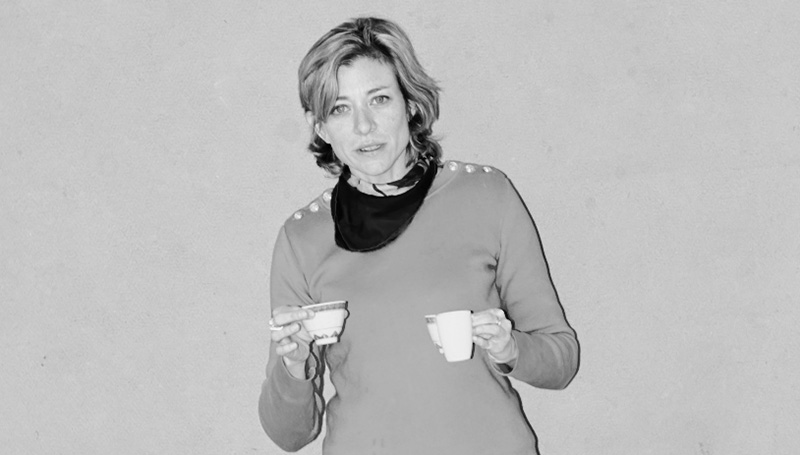WORDS/FAKE WORDS: Part V
Our magazine in close collaboration with LISTE Art Fair, as part of our media partnership on a regular basis, begins a new column in response to the social, political and economic situations, occurring globally, the dimensions that begin to take and the way that all these affect contemporary art and art world. For 3-4 times every month, we are putting questions and concerns to influential people in the art world, setting a discussion, bridging the thoughts, worries, concerns and searches of all of us for the present and the future.
 As a reference point the rise of neo-conservatism and the sneaky way that are violated and restricted individual and social freedoms globally, which are the result of hard struggles of the past, we put our relevant question. In the Part V, we have Answers from: Alix Dionot-Morani (Co-Director of Galerie Crèvecoeur, Paris) and Pamela Echeverria (Director of Labor Gallery, Mexico City).
As a reference point the rise of neo-conservatism and the sneaky way that are violated and restricted individual and social freedoms globally, which are the result of hard struggles of the past, we put our relevant question. In the Part V, we have Answers from: Alix Dionot-Morani (Co-Director of Galerie Crèvecoeur, Paris) and Pamela Echeverria (Director of Labor Gallery, Mexico City).
By Efi Michalarou & Dimitris Lempesis
One of the biggest problems of our time is Migration. In the late ‘90s Globalization, Cultural Diversity and the Intersection of Ideas, have been issues discussed with great enthusiasm in the art world, supporting and highlighting artists from the so-called periphery of the globe. Today, if we redefine and bring back up the same issues, what means Globalization, Cultural Diversity and Intersection of Ideas nowadays? How are projects conceived and determined by the artists and the art world compared to the past?
 Alix Dionot-Morani (Co-Director of Galerie Crèvecoeur, Paris): Migration is not an issue of our time. Migration has defined the activity of mankind even before Homo Sapiens colonized all Africa and keeps on defining it. Nation States have defined throughout the last centuries a quite coercive conception of migration. From the late 90’s, what we call globalization, but also the revolution of communication technologies have given great hopes, to the civili society and specially to the artists to create a new vision of world citizenship… This idea seems threatened day after day by more and more political and economic actors. This is the reason why I feel I need to escape the nationalist poisoned speech and to turn around to the artist, begging, as Princess Leia to Obi-wan Kenobi, “Help me, you’re my only hope”.
Alix Dionot-Morani (Co-Director of Galerie Crèvecoeur, Paris): Migration is not an issue of our time. Migration has defined the activity of mankind even before Homo Sapiens colonized all Africa and keeps on defining it. Nation States have defined throughout the last centuries a quite coercive conception of migration. From the late 90’s, what we call globalization, but also the revolution of communication technologies have given great hopes, to the civili society and specially to the artists to create a new vision of world citizenship… This idea seems threatened day after day by more and more political and economic actors. This is the reason why I feel I need to escape the nationalist poisoned speech and to turn around to the artist, begging, as Princess Leia to Obi-wan Kenobi, “Help me, you’re my only hope”.
 Pamela Echeverria (Director of Labor Gallery, Mexico City): When reading your question the first thing that popped out was the word “problem.” I’ve moved from seeing it as a “problem” to seeing it first as a “human right” and ultimately as a “human challenge.” I’m the product of several generations of migration. My family moved from Spain to Chile, and after a couple of decades, to Mexico thanks to the dictatorship. I grew up between Mexico City and Bergamo, which led me to the conclusion that migration is nothing less than one of the bases of the common good. Whether voluntary or forced, the common denominator propelling these movements seems to be that the conditions elsewhere appear to be “better” than the local ones. And once established, a migrant population usually ends up enriching the place where they arrive, in both senses of the term: that is, by providing cheap labor, but also by contributing to a more diverse culture. Some artists have directed our attention to similar processes that take place in nature, reminding us that borders and peripheries are absurd artifacts of humans’ own making. For example, migrations and forms of intra-group identification are at the core of Étienne Chambaud’s latest film, “INCOMPLT” (2016), which addresses the annual migration of Monarch butterflies between Canada and Mexico.
Pamela Echeverria (Director of Labor Gallery, Mexico City): When reading your question the first thing that popped out was the word “problem.” I’ve moved from seeing it as a “problem” to seeing it first as a “human right” and ultimately as a “human challenge.” I’m the product of several generations of migration. My family moved from Spain to Chile, and after a couple of decades, to Mexico thanks to the dictatorship. I grew up between Mexico City and Bergamo, which led me to the conclusion that migration is nothing less than one of the bases of the common good. Whether voluntary or forced, the common denominator propelling these movements seems to be that the conditions elsewhere appear to be “better” than the local ones. And once established, a migrant population usually ends up enriching the place where they arrive, in both senses of the term: that is, by providing cheap labor, but also by contributing to a more diverse culture. Some artists have directed our attention to similar processes that take place in nature, reminding us that borders and peripheries are absurd artifacts of humans’ own making. For example, migrations and forms of intra-group identification are at the core of Étienne Chambaud’s latest film, “INCOMPLT” (2016), which addresses the annual migration of Monarch butterflies between Canada and Mexico.
I don’t think the ways we think about globalization, cultural diversity and the intersection of ideas have changed all that much. Rather, contemporary artists are offering us ways of considering our current situation from a new set of perspectives, including the “post-human” one I mentioned above. If we adopt this perspective, we might be tempted to come to the conclusion that the real problem is human stupidity. But if art helps us to empathize with others –even non-human others– by non-verbal means, we can see human ingenuity at work. In other words, contemporary art is showing us that globalization, cultural diversity and intersecting ideas all coexist with other flows and other forces, and that we have lessons to learn from them. If it were possible to verbalize and communicate these lessons, there would be no reason to engage with art.
First Publication: www.dreamideamachine.com
© dreamideamachine
Media Partner on a regular basis of LISTE Art Fair

